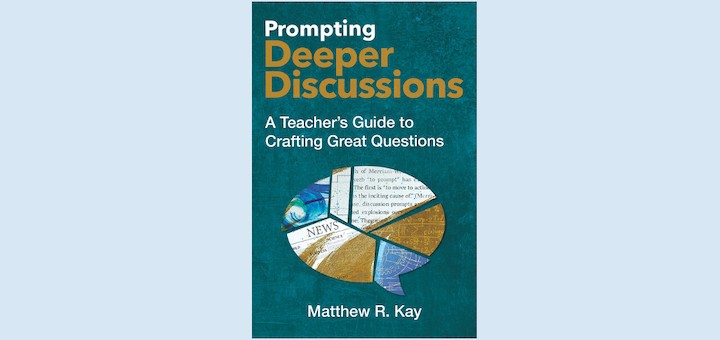Teaching and learning in grades 4-8
MiddleWeb is all about middle school & the middle grades — with a sharp focus on teaching and learning in grades 4-8. Click to learn about our work and what we have to offer, and find out how to get involved.
Welcome to Teaching! does not just tell you how to teach. It shows you with lively illustrations and QR codes showcasing strategies in real classrooms and solutions to pitfalls often seen in classrooms of new teachers, writes PD leader Alison Prochaska. A “must-read” resource.
Students who struggle with academic reading can benefit from “a compass of sorts” to help them navigate texts. To accomplish this, educator Ron Klemp developed a four-step quickwrite protocol that’s been “extremely effective” in boosting their engagement and understanding.
Solitary leadership doesn’t work very well because no leader knows everything. Ronald Williamson and Barbara R. Blackburn share strategies to help school leaders systematically build leadership capacity among their staffs and capitalize on the talents of informal leaders.
“Teacher Induction That Works: A Lasting Impact from Day One” by Tara Link and Beth Whitaker is for anyone involved in setting up or improving a mentoring program. Instructional coach Kathee Lamberies finds the book practical, engaging, and full of actionable ideas.
With the next school year not too far over the horizon, 7th grade teacher Laurie Hornik has tips for getting off to a strong start. She suggests skipping traditional ice breakers and instead introducing the class community by exploring what you will be learning together.
Fiction that explores AI through characters that are robots or humans who interact with AI can spark discussions about the future and engage readers with stories grounded in real ethical and scientific questions. ELA teacher Kasey Short shares titles and ideas for discussion.
Creating a well-rounded middle school student goes way beyond the textbook! Anne Jolly shares the core learning skills and life skills middle-schoolers need and invites teachers – especially STEM teachers – to take up the challenge to help students achieve their potential.
It’s easy to keep busy in just about any job, writes former principal Matt Renwick, now a regional systems coach. What’s difficult to discern is what we should be focused on in this moment. See how Renwick is using what he calls “productive presence” to stay organized and aware.
In Prompting Deeper Discussions Matt Kay provides actionable insights on how to structure discussions, promote critical thinking, and create a safe classroom environment that encourages thoughtful debate. Reviewer Melinda Stewart found tools to refine her classroom practice.
We want students to achieve in class and on tests, but we also want them to know how to use reading skills to enjoy reading. Reading aloud provides students with opportunities to experience success through thinking alongside their teachers and peers, writes Jennifer Sniadecki.







































